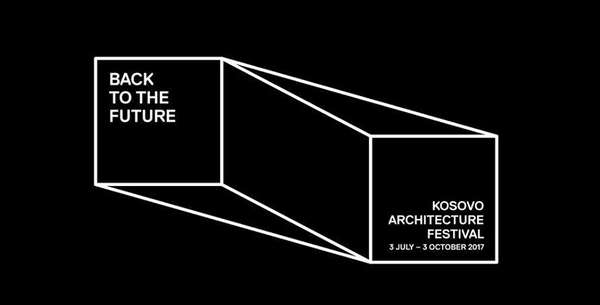Idea by
You+Pea
You+Pea
Call for ideas 2017
Tokyo Backup City
Tokyo Backup City

We believe that confluences of virtual (and physical) game spaces with cultural and legal environments open new directions for architecture. Video games allow designers to structure both the spatial construction of worlds and the rules by which inhabitants may interact with them. While video games are coded constructions, they deal in the transmission of symbolic images and rules as the meeting point of visual arts and computational cultures. They harness advances in digital design but also invoke our social and cultural history.
As Juul says, games are spaces for experimenting with failure. Designers can pursue architectures that might grow, distort or fail around the player’s decisions without enacting the consequences. They give us a platform for realising inhabitable ideas without the cost and space of physical construction. Do cities now need to be physically built to be understood? Can virtual cities test and solve the problems of the physical city? Can we backup our world?

A series of Japanese ‘Medal Games’ as urban monuments are woven together into a gamified landscape sited in Osaka. The drawing tests collisions of video game and arcade aesthetics with a condensed version of the Tokyo metropolis. The ‘colour burn’ of Tokyo’s neon surfaces is encoded into the drawing to suggest a new city of intensity and friction being negotiated by its 'players'.
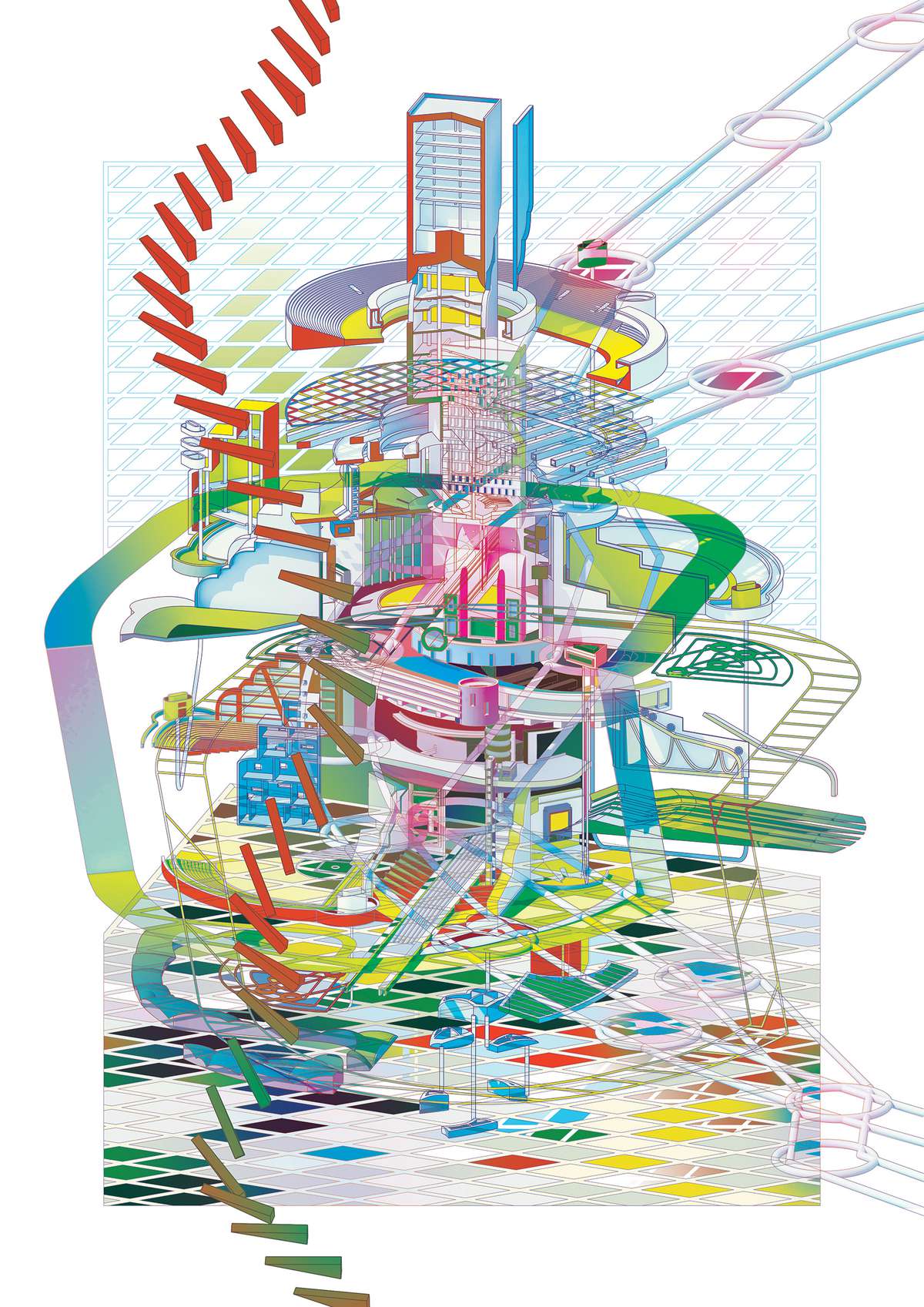
Here we explode a medal, revealing the logics and mechanisms within the structure. Inspired by schematic drawings of arcade cabinets and pinball tables, we show a structure where people become tokens cascading through the miniature monuments of the arcade game.
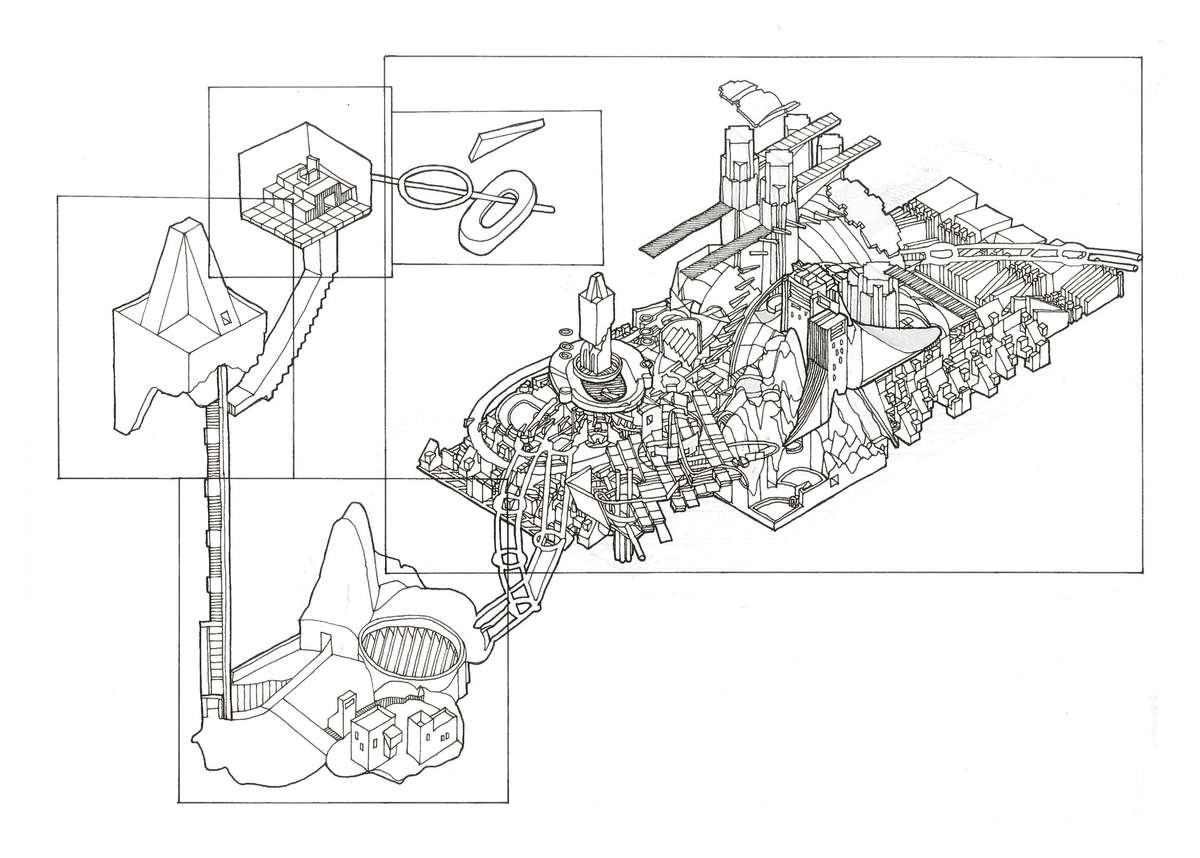
Sketch exploring the landscape at multiple scales. Medal Games typically work on complex schedules of ‘random’ events, with tokens driven through the system by miniature infrastructures. The drawing interrogates people encountering this new form of gamified urbanism as a journey through the city.

We directly translate the representational qualities of the drawings into an inhabitable game space in Unity 3d, to continue the notion of momentum through the Backup City, and to start placing the virtual inhabitant into our architectural speculation.
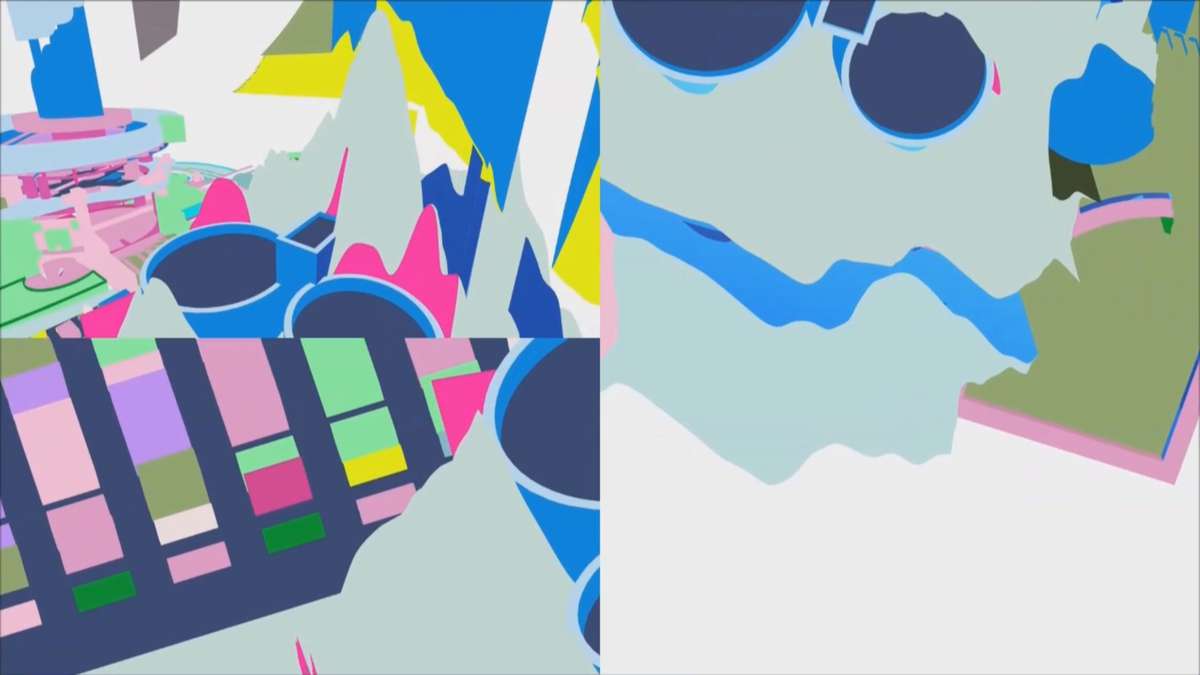
While our drawings speak of the complexity of encoding Tokyo into an urban proposition, our playable version of the city will manifest this by enmeshing different cameras into one scene, allowing the player to engage with multiple scales of the city at once. Rather than simply looking at the mania of Tokyo, we can experience the mania through the encoded logics of the videogame. We would like to propose these as playable architectural drawings.
Tokyo Backup City
Tokyo Backup City

We believe that confluences of virtual (and physical) game spaces with cultural and legal environments open new directions for architecture. Video games allow designers to structure both the spatial construction of worlds and the rules by which inhabitants may interact with them. While video games are coded constructions, they deal in the transmission of symbolic images and rules as the meeting point of visual arts and computational cultures. They harness advances in digital design but also invoke our social and cultural history.
As Juul says, games are spaces for experimenting with failure. Designers can pursue architectures that might grow, distort or fail around the player’s decisions without enacting the consequences. They give us a platform for realising inhabitable ideas without the cost and space of physical construction. Do cities now need to be physically built to be understood? Can virtual cities test and solve the problems of the physical city? Can we backup our world?
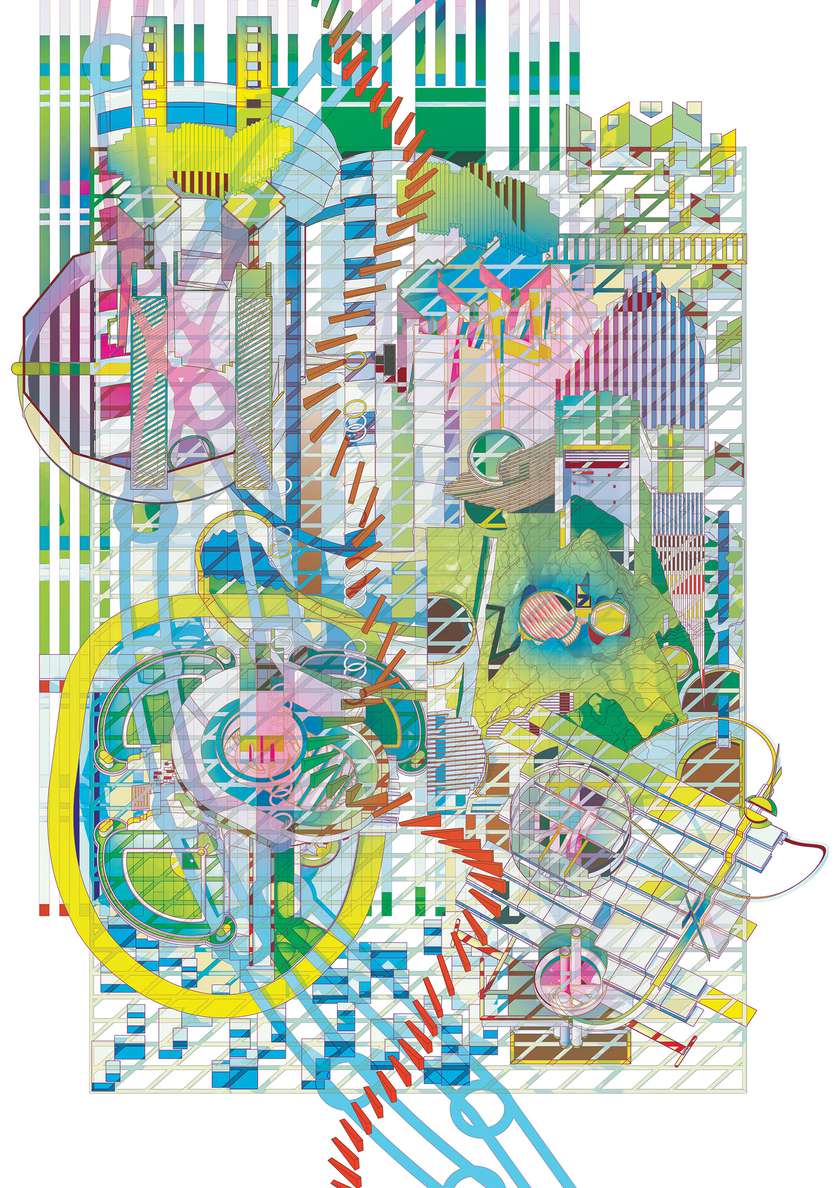
A series of Japanese ‘Medal Games’ as urban monuments are woven together into a gamified landscape sited in Osaka. The drawing tests collisions of video game and arcade aesthetics with a condensed version of the Tokyo metropolis. The ‘colour burn’ of Tokyo’s neon surfaces is encoded into the drawing to suggest a new city of intensity and friction being negotiated by its 'players'.
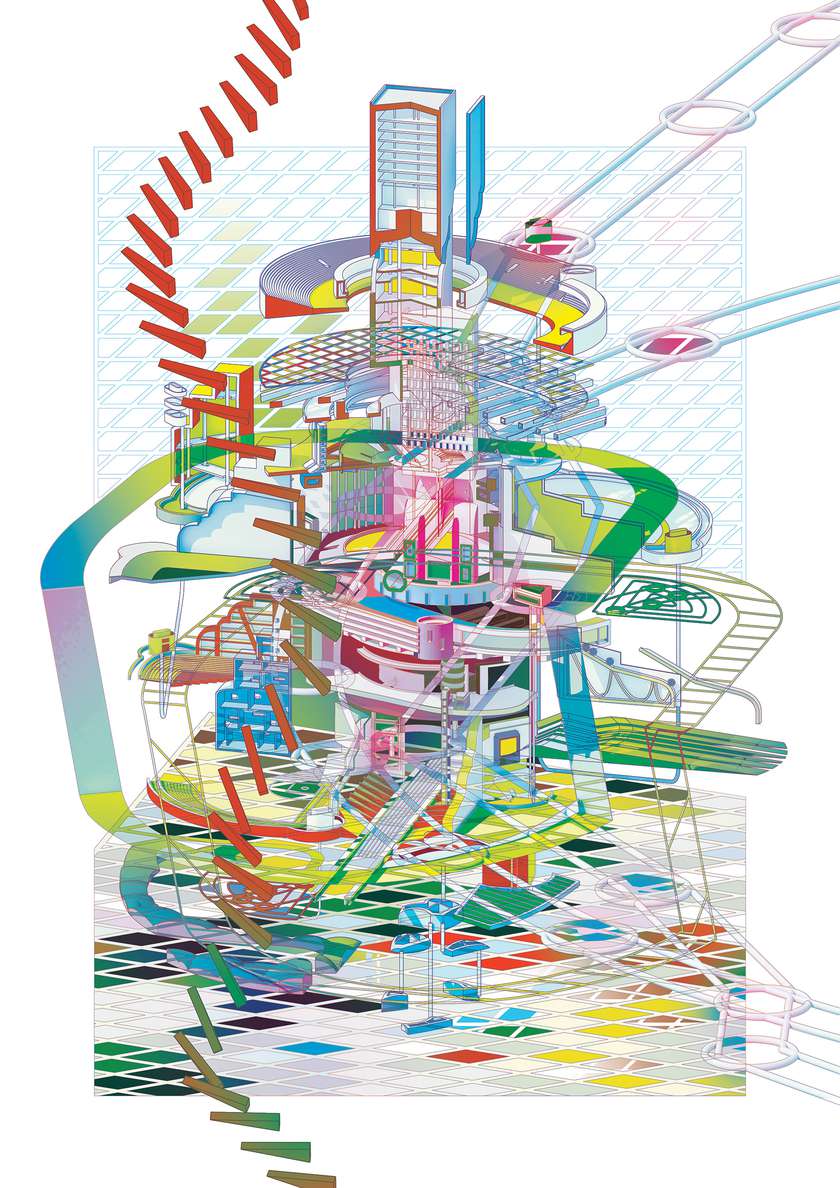
Here we explode a medal, revealing the logics and mechanisms within the structure. Inspired by schematic drawings of arcade cabinets and pinball tables, we show a structure where people become tokens cascading through the miniature monuments of the arcade game.
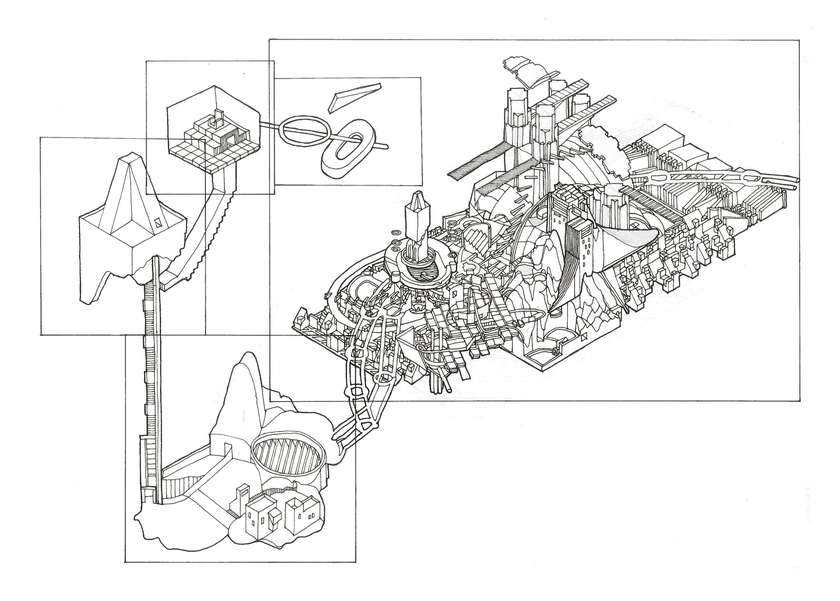
Sketch exploring the landscape at multiple scales. Medal Games typically work on complex schedules of ‘random’ events, with tokens driven through the system by miniature infrastructures. The drawing interrogates people encountering this new form of gamified urbanism as a journey through the city.

We directly translate the representational qualities of the drawings into an inhabitable game space in Unity 3d, to continue the notion of momentum through the Backup City, and to start placing the virtual inhabitant into our architectural speculation.

While our drawings speak of the complexity of encoding Tokyo into an urban proposition, our playable version of the city will manifest this by enmeshing different cameras into one scene, allowing the player to engage with multiple scales of the city at once. Rather than simply looking at the mania of Tokyo, we can experience the mania through the encoded logics of the videogame. We would like to propose these as playable architectural drawings.
